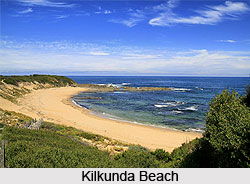 Kilkunda is the name of a panchayat town that has flourished in the Nilgiris district of Tamil Nadu state of India.
Kilkunda is the name of a panchayat town that has flourished in the Nilgiris district of Tamil Nadu state of India.
Knowledge about a town or city becomes partial without gathering information about the demographical scenario of the concerned town. So it has become imperative for any layman first to accumulate as many data as possible about its demography. In order to highlight characteristics of demography of Kilkunda demographers have carried on surveys and research works. Amongst several reports that have been prepared by these demographers, the census report of India of the year 2001 has gained popularity.
According to this report, the total population of Kilkunda showed a counting of 10,150. An analysis of this report further enables one to know about the status of males, females and also children. It is interesting to note that number of females in Kilkunda is more than males. In other words, male populace constitutes of 49 percent of the total population. Female populace constitutes 51 percent. Children who are below six years of age constitutes of 9 percent of the total population of Kilkunda.
Literacy is an indicator for tracing the growth of a town in India. Since Kilkunda has got a high average literacy rate which is even higher than that of India, one can easily come up with the conclusion that this Kilkunda is more or less a developed town. Thus 74 percent and 59.5 are the average literacy rates of Kilkunda and India respectively. Males of Kilkunda have got propensity towards education which is quite evident from its high male literacy rate . Thus 83 percent is the literacy rate of males. In Kilkunda female literacy rate is only 66 percent.
From the viewpoint of the whole district, few lines can also be penned down. Being a part of the district it is quite evident that people of this Kilkunda town too stride into the footsteps of the Nilgiris district. Tea, coffee, spices, cabbage, carrot, fruits are found in abundance in the region.



















